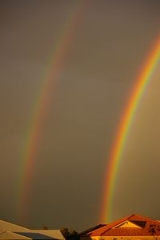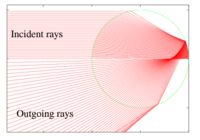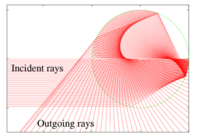
Alexander's band
Encyclopedia




Optical phenomenon
An optical phenomenon is any observable event that results from the interaction of light and matter. See also list of optical topics and optics. A mirage is an example of an optical phenomenon....
associated with rainbow
Rainbow
A rainbow is an optical and meteorological phenomenon that causes a spectrum of light to appear in the sky when the Sun shines on to droplets of moisture in the Earth's atmosphere. It takes the form of a multicoloured arc...
s which was named after Alexander of Aphrodisias
Alexander of Aphrodisias
Alexander of Aphrodisias was a Peripatetic philosopher and the most celebrated of the Ancient Greek commentators on the writings of Aristotle. He was a native of Aphrodisias in Caria, and lived and taught in Athens at the beginning of the 3rd century, where he held a position as head of the...
who first described it. It occurs due to the deviation angles of the primary and secondary rainbows. Both bows exist due to an optical effect called the angle of minimum deviation. Light which is deviated at smaller angles than this can never reach the observer.
The minimum deviation angle for the primary bow is 137.5°. Light can be deviated up to 180°, causing it to be reflected right back to the observer. Light which is deviated at intermediate angles brightens the inside of the rainbow.
The minimum deviation angle for the secondary bow is about 230°. The fact that this angle is greater than 180° makes the secondary bow an inside-out version of the primary. Its colors are reversed, and light which is deviated at greater angles brightens the sky outside the bow.
Between the two bows lies an area of unlit sky referred to as Alexander's band. Light which is reflected by raindrops in this region of the sky cannot reach the observer, though it may contribute to a rainbow seen by another observer elsewhere.

